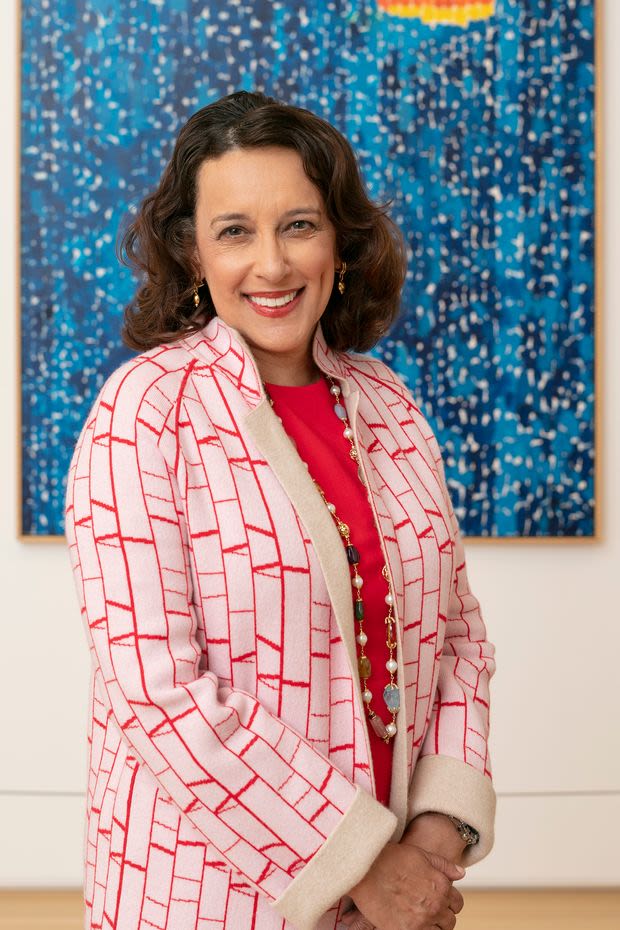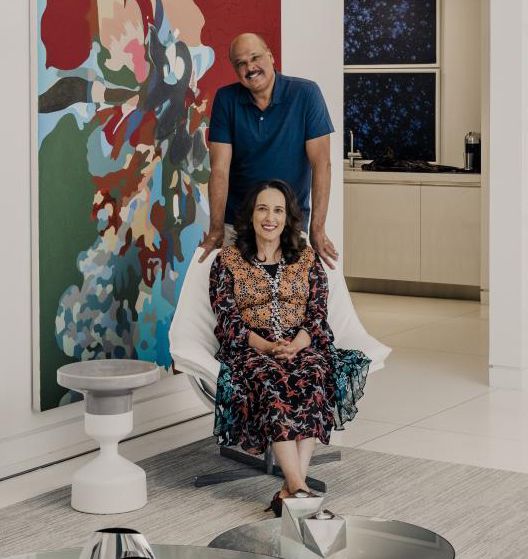Why I Give
Denise Gardner

by Joe Giovannetti
Art and education are embedded in Denise Gardner’s DNA.
The chair of the Art Institute of Chicago Board of Trustees, Gardner first became involved at the Art Institute of Chicago museum 26 years ago, where her volunteer work on leadership committees led to her first spot on the board. There, she began to learn more about the School’s history.
“The School's more than 100-year legacy in educating artists of color in Chicago became clear to me, and the more I learned, the more I wanted to participate,” Gardner explained. “I was really impressed with the School and the commitment it is making to Chicago.”
For her husband, Gary, his connection to the School goes back even further—according to Denise, reminiscing about his childhood bus trips from Chicago’s West Chesterfield neighborhood to SAIC’s weekend art classes is one of Gary’s favorite pastimes. Together, the pair—who currently reside in Chicago’s Beverly neighborhood—established the Denise and Gary Gardner Scholarship in 2015 to support merit- and need-based scholarships for Chicago students and focus on strengthening the School’s connection to the South Side.
“An arts community makes for a more thriving metropolis. Period. It contributes to the economy. It contributes to the community’s mental health. It contributes to the culture’s vitality. We want [to do] anything and everything we can to support that community.”

Denise and Gary Gardner in front of SAIC Professor Candida Alvarez's DaDaDahlia. Photo by Whitten Sabatini for the New York Times
Denise and Gary Gardner in front of SAIC Professor Candida Alvarez's DaDaDahlia. Photo by Whitten Sabatini for the New York Times
“It’s a marriage of two things that we love . . . an opportunity to ensure that artists of color have access to higher education,” said Gardner. “Chicago has long been an incubator for African American artistic talent in the country, and I’d like to see that legacy continue to flourish and grow.”
Gardner knows firsthand that higher education can transform lives, and today’s rising barriers to entry and success fuel her motivation to pay her experience—and love of art—forward. Gardner hopes that by easing future students’ financial concerns through scholarships, she can help provide them with the tools to cross these barriers, focus on honing their craft, and become the fully realized changemakers that Chicago needs.
“An arts community makes for a more thriving metropolis. Period. It contributes to the economy. It contributes to the community’s mental health. It contributes to the culture’s vitality. We want [to do] anything and everything we can to support that community.”
At her core, Gardner believes our city’s future lies in the hands of Chicago’s creative youth—and that anyone, through support large or small, can help these young makers find their voice at SAIC.
“The will is there. The students are there. We just have to contribute so more students can say yes to the invitation letter.” ■

